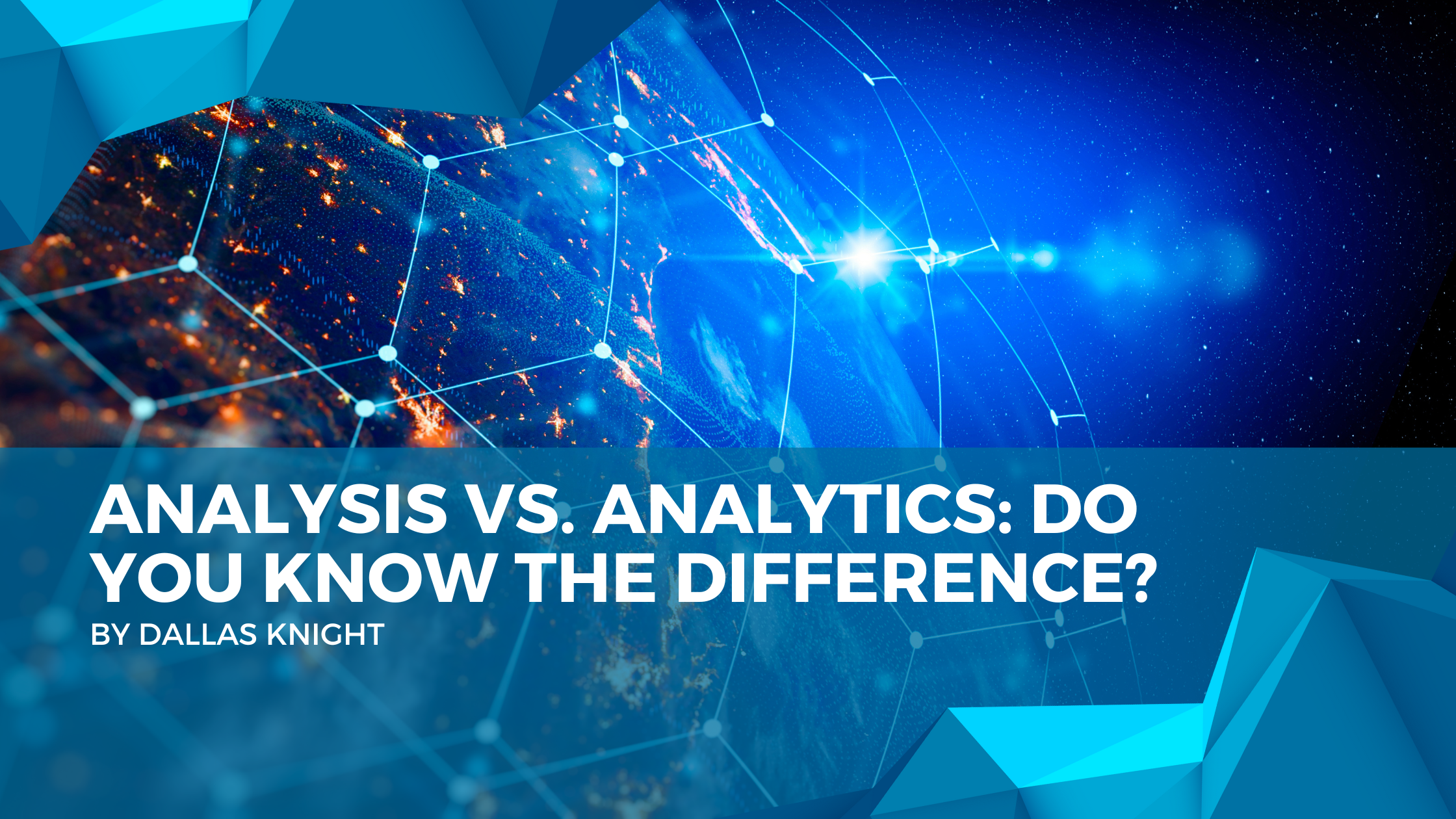
Analysis vs. Analytics: Do you know the difference?
Analysis and Analytics are two terms often misrepresented or misunderstood. So, I thought we could set the bar straight by looking at the official definitions and how they apply to the investigative world.
Let’s start with Analytics. The term by definition is: A field of computer science that uses math, statistics, and machine learning to find meaningful patterns in data. Analytics is the systematic computational analysis of data or statistics.
To me that means there is a whole lot of work a computer is doing for me and then presenting me with some curious information that I need to decide what I’m going to do with. Often times, this result is further challenged and then documented, presented or used to make a decision. A great example of this is falls within financial institutions’ transactions. When you swipe your credit card, many banks have predictive analytics in place that quickly determine if this activity fits into your profile and then approves or declines this transaction. The system may even send you a quick text message for confirmation. But the understanding and the conclusion that the transaction was indeed fraudulent is determined by analysis.
Analysis requires a human element and may be done without any involvement of software or computers. Analysis has been a part of the human way of thinking since existence. The term by definition is: A detailed examination of anything complex in order to understand its nature or to determine its essential features. A person can take a look outside and through their analysis decide to layer up for the day’s weather. No software needed. However, in today’s world these decisions are often made while leveraging analytics. A jump start to making a decision because a tool helped me to reach that conclusion a bit quicker.
With all of that said, both are needed and often work in conjunction with each other. After all, a human will never be able to process data as fast as a computer and even with all of the artificial intelligence out there, analytics will never have a human’s intuition. I primarily point these differences out in an effort to better arm you when vendor shopping. Please keep in mind whether a vendor promotes a solution that performs analytics or that of which provides you analysis capabilities. This understanding will help to determine where within your workflow you may need some “tuning up” and how a “tool” may fit to do so.

